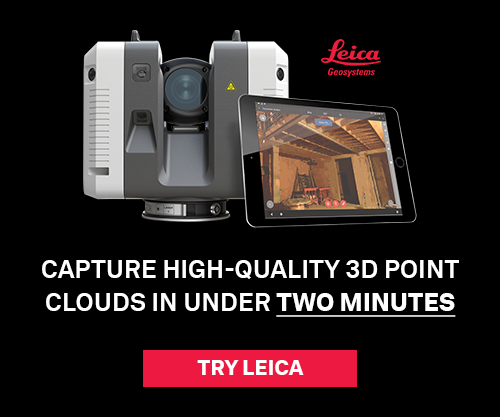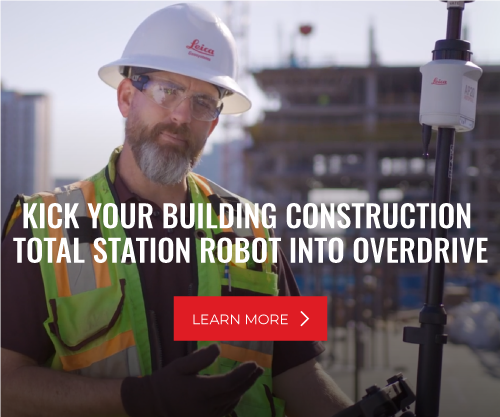When your business is facing headwinds from labor shortages, coordination challenges, communication issues, and material cost volatility, you need every possible advantage. By integrating the latest technologies in your company’s operations, you can optimize and standardize procedures for greater performance, productivity and, ultimately, profitability.
For starters, leading MEP contractors have adopted building information modeling (BIM) into their standard workflow. “The technology has come a long way, to the point where a majority of our projects require us to do modeling in order to shorten the construction duration,” says Jeff Luczak, engineering manager at August Winter & Sons, based in Appleton, Wisconsin. By modeling systems and infrastructure in BIM software, a team can precisely coordinate their work scope with other trades well before they’re on the job site.
“Our laser scanners have proven to help us save hours and hours of fieldwork in measuring and verifying locations of pipes, equipment and structure that we’re trying to work around.”
In particular, Luczak says, his firm prioritizes purchasing technologies that will deliver “time savings in the field.” By working more productively, August Winter can bid competitively on projects without compromising the quality of work they deliver.
Accuracy at the Touch of a Button
August Winter invested in total stations and laser scanners from Leica Geosystems for the technology provider’s best-in-class accuracy, intuitive user experience, and record of customer support. “Our laser scanners have proven to help us save hours and hours of fieldwork in measuring and verifying locations of pipes, equipment and structure that we’re trying to work around,” Luczak says.
Advanced 3D reality capture technology offers many benefits over analog tools for site documentation. For retrofit projects with no drawings or models, laser scanners can capture the data necessary for a base BIM model within seconds. Field surveyors also worry less about missing a critical dimension. “With a point cloud,” Luczak says, “if we forget a measurement, we don’t have to drive back four hours across state lines to a site. We have that information captured in the cloud.” And with tolerances in the millimeters, laser scanners provide a level of detail and accuracy that can take hours or days to achieve using other means.

Technology Wins for All
Technology can also ensure efficiency and safety during fieldwork, Luczak notes. When installing hangers for pipework, trays and ductwork, his team uses Leica total stations, which can reference the project BIM model, to identify anchor locations for pre-drilling into concrete decks. “That’s significant from a safety standpoint,” he says. “You don’t want to have someone using a hammer drill overhead with other workers below them.”
Clients also benefit from the convenience and capabilities of advanced technology. For design-build projects, Luczak says his firm often conducts laser scanning as part of its cost-estimating process to confirm the accuracy of its layouts and to provide a fair price. Because laser scanners can capture conditions from afar—meaning contractors don’t have to run measuring tapes around or adjacent to boilers and other dangerous equipment—the client might be able to minimize plant downtime. “Owners want their business or building up and running faster because they want that cash coming in rather than going out,” he says.
“The number one reason we chose Leica from the beginning was the tolerance and accuracy of the equipment, but also the support. If I make a phone call, I’m talking to somebody right away. If there’s a problem, I’m getting an answer back in very short order. That’s important because we’re up against deadlines.”
To help shorten potential downtimes for owners, August Winter prefabricates MEP components using dimensions from the laser scans. “We’re able to model our piping, ductwork and other systems and fabricate it efficiently,” Luczak says.
One example is in the installation of plumbing, HVAC and piping for wastewater treatment plants. “In the past, a foreman would set out on a lift and measure two, three or four piping spools at a time,” he says.
The company would fabricate those pieces and deliver them to the site. The foreman would then measure the next set of spools, and the process would repeat. Due to the parts’ high variability and complexity and the time required to manually take measurements, the foreman was limited in how much they could accomplish per survey.
With laser scanners, August Winter can now model all the spools at once for a one-time fabrication order and delivery, with complete confidence that all the parts will fit precisely in place. “It’s been a huge game changer,” Luczak concludes.
Support in the Pipeline
August Winter’s willingness to evolve its operations and adopt new technology has helped one pain point much of the construction industry is facing: labor shortages. Field surveying is notoriously a laborious task, so when emerging professionals, many of whom are digital natives, find a company that will equip them with modern tools, they are intrigued. “It helps our recruitment efforts when we can show them that, ‘Hey, we do have this technology that you can use,’” Luczak says. “With the continued labor shortages that are predicted, I’m looking forward to more automation in the field.”
To deliver the best service and projects to their customers, MEP contractors also need technology providers that offer best-in-class customer support. Even the most experienced operator can run into technical issues. For Luczak, Leica Geosystems’ record of responsiveness to its customers was another selling point for the provider. “When something comes up, I can confidently say that if I call customer support, I’m talking to somebody right away,” he says. “Or if I send in an issue, I’m getting an answer back in short order. That’s important because we’re often up against deadlines.”
When your employees are confident that their digital technology will deliver the accuracy and data they need while knowing that help is just a phone call away, you no longer have to fight the daily fires at hand. Instead, you can work on big-picture, long-term goals for your company, such as expanding its capabilities, talent and project workload—all of which is possible by adopting state-of-the-art technology.

Ready to explore your options? Get in touch with a Leica Geosystems building construction specialist to discuss your needs.






